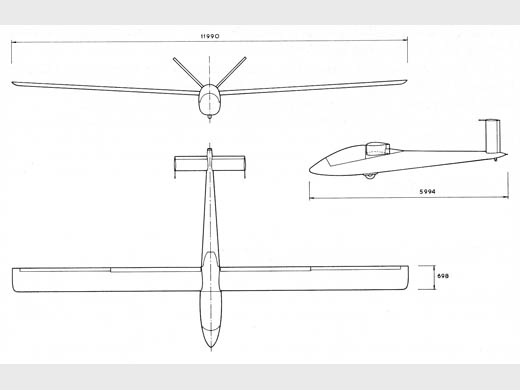| Constructeur(s) | | Constructeur | Construits | | The Birmingham Guild Ltd, Grosvenor Street West, Birmingham | 1 | | Nombre total de constructions | 1 |
|
|
| Infos techniques | Empennage en V. The original wing design used a foam core to stabilise a thin skin, but when Birmingham Guild took up the design they wanted metal, and the BG-100/12 prototype first flew with 12m (39ft 4in) wings using 0.3mm dural skin. This prototype BG 100/12 was a cantilever shoulder-wing monoplane of all-metal construction with a V-tail and a large hinged moulded cockpit canopy.
Ailerons and flaps occupy the whole of the trailing edge. The Gypsy has a constant chord V-tail constructed in the same manner as the wing.[1][2] Its fuselage behind the nose is an oval section metal monocoque with a long, smooth, bulged canopy over the single seat cockpit that rejoins the fuselage profile. There is a single, semi-protruding fixed mono wheel under the wing and a small tailwheel. |
| Histoire résumée | Le projet initial avait été conçu par Lawrence Patrick MOORE (CBE, A.F.R.Ae.S., né le 27 août 1906, mort le 15 janvier 1976 à Hereford) et dessiné par la compagnie Sailplane Designs Ltd (Moore, J. Gibson and K. Emslie) en 1965. Mais aucun constructeur de planeurs ne fut intéressé par ce projet. En 1969, il fut repris par Birmingham Guild Ltd, un compagnie spécialisé dans la fabrication de pièces métalliques pour l'industrie aéronautique. Le premier vol du prototype c/n BG-100/12, fut effectué le 7 avril 1970, par Derek Piggott à Pendeford Aerodrome, Wolverhampton.
Une version 15 mètres (finesse max 37 et taux de chute 0,52 m/s à 67 km/h) avait été projetée. |
| Liens personnalités | Pas de personnalité associée. |



